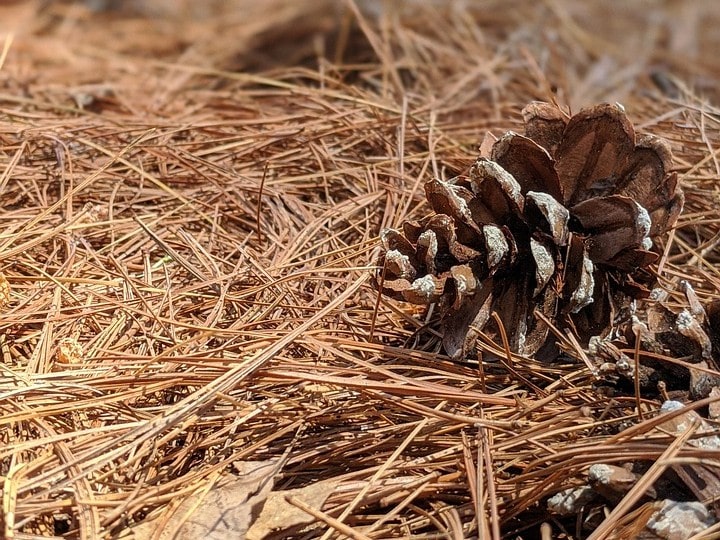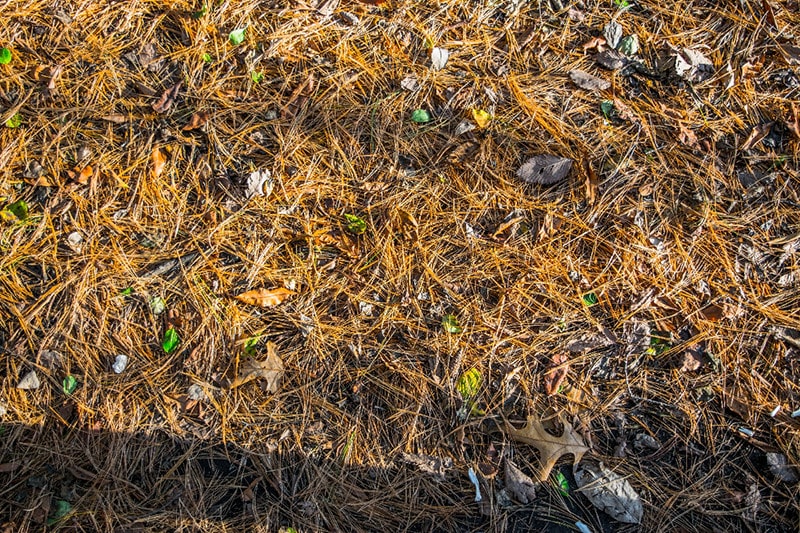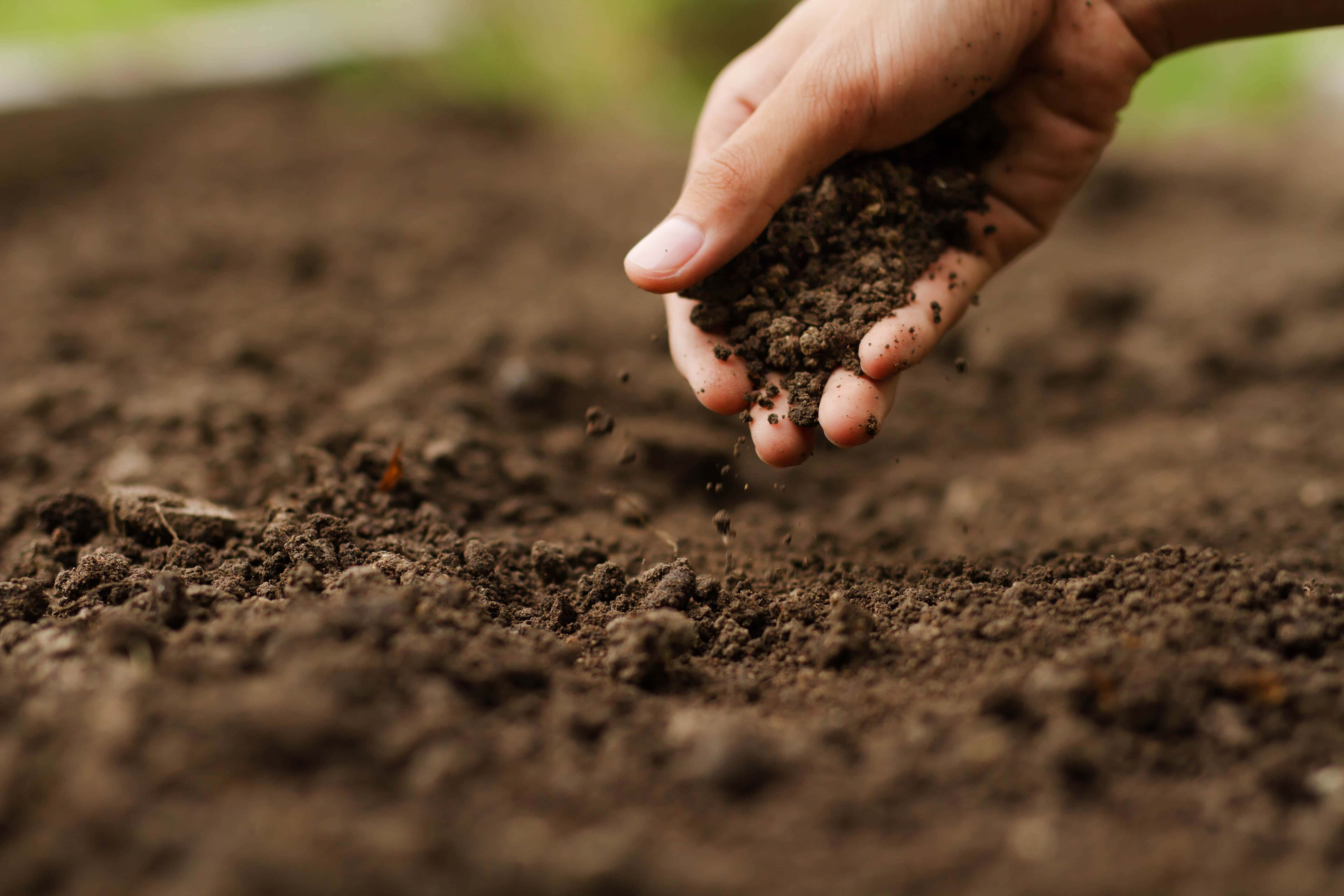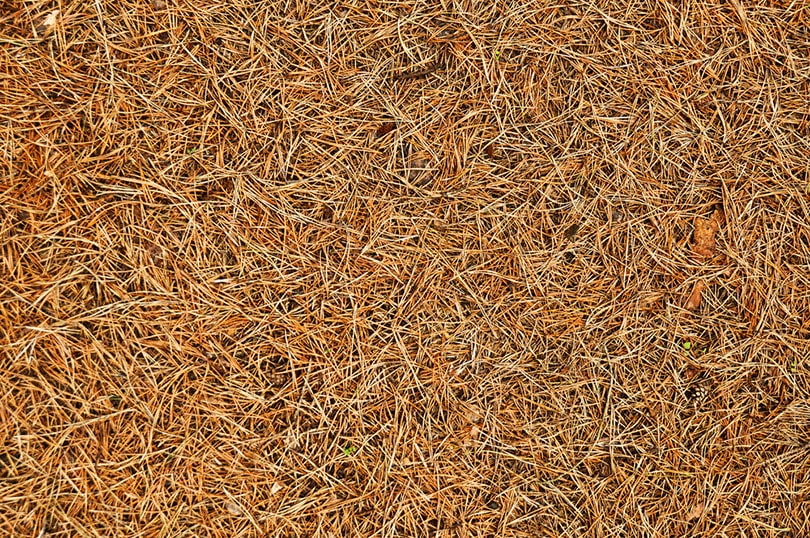Do Pine Needles Make Soil Acidic? Alternatives, Facts, & FAQ
-
Pete Ortiz
- Last updated:

If you’re a fan of using natural compost to stimulate growth, you’ve probably already used pine needles. They are cheap, easy to work with, and a great choice for mulching. However, there’s a common belief that pine straw changes soil pH levels. Is that true? No, not quite. While pine needles are, indeed, acidic, they don’t affect soil acidity or alkalinity in any impactful ways.
How big of a role do pH levels play, though? Do they damage garden plants (veggies, fruits, and flowers) or not? Are pine needles a good option for composting? How long do they take to break down? And finally, are there any alternatives out there that you might use instead? Read on, and you’ll find out!
What Are They Good For?

Evergreen conifers shed their spiky needles every year, and pine trees are no exception. This usually happens in late August or early September and continues through most of the fall. And, on average, you can expect 30–35% of the needles to drop. Depending on how many trees are there in the yard, you might have quite a lot of pine straw on your hands. So, what’s the deal with fallen pine needles?
Shouldn’t you just dispose of them as waste? On the contrary! If you have a garden, pine straw will serve as the perfect mulch for it. Not only will the needles keep the soil moisturized and aerated, but they will also halt weed growth. Pine straw takes very little effort to use. All you have to do is give it some time to break down, then rake it up and spread it over your crops.
- Cheaper than most mulch types
- Easy to rake up and spread around
- Lightweight, take little effort to maintain
- A 100% eco-friendly, recyclable product
- No need to cut any pine trees down
- Don’t leave a mess behind in the yard
- Make it much harder for weed to grow
- Keep the soil humid and ventilated
- Protect the soil from the summer heat and winter cold
- Serve for a long time (don’t break down immediately)
As a bonus, you can use pine straw as a disinfectant against bacteria and add a fresh flavor to your favorite dishes.
Do Pine Needles Take Long to Decompose?
Overall, there are 114 species in the Pinus genus, and it can take pine needles anywhere from 2–3 months to a year to break down. This depends on the type of pine trees you’ve got in the yard and your own composting skills. To speed up the process, put the needles in a compost pile that’s well-moisturized and well-aerated. Soaking them in water for 1–2 days before adding them to the pile is another great idea.
Next, make a habit of turning the pile at least once a week. For the best results, the needles have to only account for 10–15% of the mix. Fresh needles take more time to decompose. That’s why some gardeners prefer to use aged straws instead. On top of that, we recommend cutting the needles into smaller pieces. Use pruning shears for that. Got a wood chipper or shredder around? Even better!

What Is Soil Acidity? Why Does It Matter?
This term is used to describe the concentration of hydrogen ions: the higher it is, the more acidic the soil will be. So, how do you measure acidity, exactly? For that, we use the pH scale. It goes from 0 to 14, and, in contrast to popular belief, higher numbers don’t mean higher acidity levels. Instead, the lower the pH readings, the more acidic the soil will be. Acidic soil contains high levels of manganese and iron.
That’s bad news for most garden plants. On the other hand, when the pH levels in the soil reach 10–12, that means it’s highly alkaline. To put it simply, pH levels below 7 are acidic; anything above 8 means the soil is alkaline. Again, the lower the soil is on the pH scale, the more acidic it is, and vice versa. To avoid nutrient deficiency, stick to 6.5–7 pH levels.

- Ultra acidic: 3–3.5
- Extremely acidic: 5–4.4
- Very acidic: 5–5.0
- Strongly acidic: 1–5.5
- Moderately acidic: 6–6.0
- Slightly acidic: 1–6.5
- Neutral pH levels: 6–7.3
- Slightly alkaline: 4–7.8
- Moderately alkaline: 9–8.4
- Highly alkaline: 5–9.0
- Strongly alkaline: 0+
But wait—how do you know exactly how acidic the soil is? For that, have the soil thoroughly tested. Don’t worry: it won’t cost a fortune to do that. You can either ask a local laboratory, geotechnical group, or university to help you figure it out or call a soil testing service provider. Get quotes from at least a couple of companies, though.
Alkaline Soil: Fixing It with Pine Straw
If you’ve heard farmers and gardeners use the term “sweet soil”, that means it’s alkaline. The higher the soil pH levels, the richer it will be in chemical elements like sodium, calcium, and magnesium. However, since alkaline soil isn’t nearly as soluble as acidic soil, it’s much harder for plants to absorb the nutrients. That, in turn, leads to slow growth.
That’s why it’s often recommended to opt for neutral or slightly acidic soil. But, even if you’re “stuck” with alkaline soil, you can improve it by adding mulch (including, of course, pine needles), acidifying fertilizers, and giving the soil time to change its pH structure. Sulfur works as well, but you should only add 1–3 ounces per 10 square feet of soil.

Do Pine Needles Affect Soil pH Levels?
No, pine straw does NOT have a big impact on soil acidity. Even if you use multiple bales of fresh pine needles in the garden, that still won’t be enough to affect the pH of the soil in any way. That said, do keep in mind that the fresher/greener the needles, the higher their acidity levels are going to be. Before the needles drop, they have a pH level of 3.2–3.8.
So, yes, at that moment, the levels are very high. However, once the needles turn into straws, they quickly revert to neutral pH levels (6.0–7.0). And the longer you keep them in a compost pile, the lower the acidity levels will get. To play it safe, only start using pine needles as mulch after 2–3 months. This way, they’ll reach the desired acidity and still have all the pros we listed earlier.
How Much Does Pine Straw Cost?
Don’t have any pine growing in the backyard? That’s okay—there’s always the option of buying it. Thankfully, a bale of pine straw is an affordable purchase. It costs $5–10 and covers 30–40 square feet (up to 100 sq. ft. if you use it sparingly). You can get it at a local home improvement store like Lowes, Home Depot, and even Wal-Mart. Or, get in contact with a local farmer, gardener, or landowner.
They’ll probably be able to sell it to you at a lower price. Ordering it online is also possible, of course, but will cost more and take extra time to arrive at your doorstep. Now, the best thing about buying the needles instead of breaking them down manually is that you’ll get pine straw (dried remains of pine needles) right off the bat, ready to be used as mulch. It won’t be acidic, either. A quick note—longer needles cost more but last longer.

The Best Alternatives to Pine Needles
Don’t feel like pine straw is the best mulch for your garden? No worries—there are more than enough alternatives. First, you might want to go with grass clippings. Or, use shredded leaves, straw, and bark of wood instead. There’s also the option of covering the soil with sawdust. It will serve as an excellent replacement for pine needles as well.
And let’s not forget about the benefits of crushed rocks, pebbles, and gravel. So, take a moment to look around the backyard. If you like to keep things in order on the property, most likely, you’ll have access to at least 1–2 types of mulch. And it won’t cost a single penny to put it to good use!
 Conclusion
Conclusion
If you wanted to use pine needles from the yard as mulch in the garden but weren’t sure about the consequences, you can stop worrying. According to the experts, pine straw doesn’t have the capacity to change the acidity and alkalinity balance of the soil. So, get all the needles you can (or buy them from a local farmer) and spread away!
They will not only make sure the soil is warm and moist but also keep the weed population low, allowing your crops to grow. This is a cheap, 100% natural product that should be in any gardener’s arsenal. Or, if you’re trying to use something different, check our list of the best alternatives and take your pick!
See also:
Featured Image Credit: arrowmaze, Pixabay
Contents


